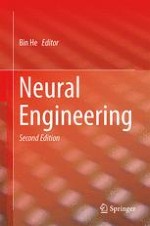2013 | OriginalPaper | Buchkapitel
2. Brain–Computer Interfaces
verfasst von : Bin He, Shangkai Gao, Han Yuan, Jonathan R. Wolpaw
Erschienen in: Neural Engineering
Verlag: Springer US
Aktivieren Sie unsere intelligente Suche, um passende Fachinhalte oder Patente zu finden.
Wählen Sie Textabschnitte aus um mit Künstlicher Intelligenz passenden Patente zu finden. powered by
Markieren Sie Textabschnitte, um KI-gestützt weitere passende Inhalte zu finden. powered by
